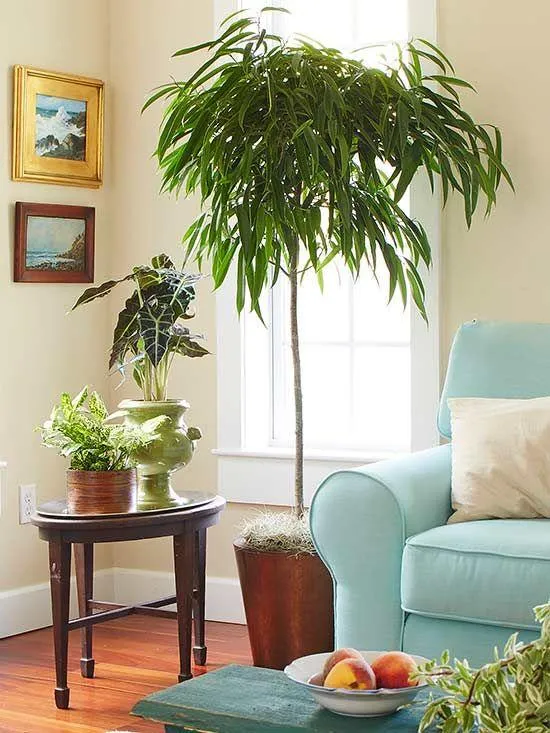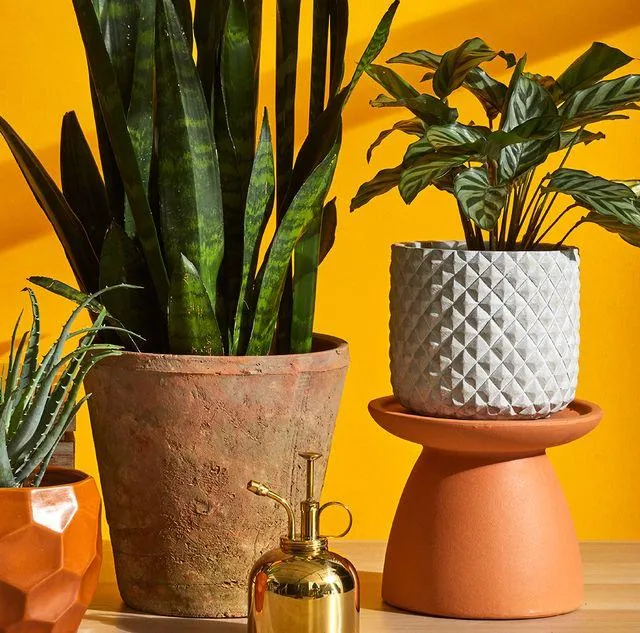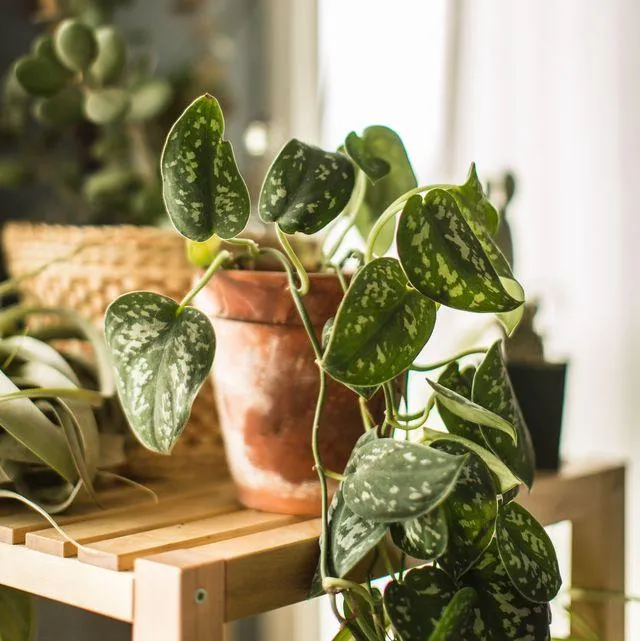The Best Trees to Grow Indoors and Why
For those who don’t have access to a yard but still want the joy of nurturing plant life, growing trees inside your home is a great option. Indoor trees not only add beauty and greenery to small spaces, but also help purify the air. In this article, I’ll discuss some of the easiest trees to care for indoors and provide tips for their care.
Peace Lily
- Peace Lilies (Spathiphyllum) are one of the best air-purifying plants you can find. They absorb benzene, formaldehyde, and trichloroethylene—three common indoor air pollutants—from the air. From my experience keeping peace lilies, their large white blooms that pop up above the dark green leaves are absolutely stunning. A single peace lily plant can cleanse the air in a 200 square foot room very effectively.
- Peace lilies thrive in medium to low light and standard potting soil. They need to be watered only when the top inch of soil dries out. Overwatering is the main cause of their demise, so feel the soil before watering. Fertilize every 2-3 months during the growing season. I find keeping the plant in bright, indirect light works like a charm.
English Ivy
- English ivy (Hedera helix) is another great option if you want an air-cleaning plant with trailing vines. It removes formaldehyde, benzene, and trichloroethylene from indoor air. Ivy spreads fast and will spill over any container if not pruned regularly. It’s hardy and forgiving of neglect.
- Ivy does well in low to medium light and regular potting soil. Allow the top inch to dry out before watering. Prune and repot annually as it outgrows its pot. Place ivy where it can climb on a moss pole or trellis for a stunning trailing effect. In my experience, it thrives on bookshelves and hanging baskets with aerial roots.
Chinese Evergreen
- Chinese evergreen (Aglaonema) is another great low-light plant that removes benzene and formaldehyde from indoor air. It comes in various color variations like pink, white, and burgundy. I find their foliage dramatic with patterns of dark green, creamy white, and subtle shades of pink.
- Chinese evergreens prefer medium to low light and average indoor temperatures. Water when the topsoil becomes slightly dry. Reduce watering in winter months when growth is slower. They do well in most soils as long as it drains well. Place them somewhere with bright, indirect light for impressive foliar patterns.
Dragon Tree
- Dragon trees (Dracaena marginata) remove nitrogen dioxide, benzene and formaldehyde from the indoor air very effectively. As their common name implies, their tall, bamboo-like stalks resemble dragon tails. Their tapered leaves come in various shades of green and add an exotic touch to any room. They tolerate low-light well.
- Dragon trees thrive in medium to low light and warm temperatures above 60°F. Allow the soil to dry out partially between waterings. They prefer bright light for compact growth. Prune occasionally to maintain shape. In my experience, they do best in bright corners away from drafty windows.
Snake Plant
- Snake plants (Sansevieria trifasciata) are famous for their air-purifying abilities and toughness. They remove toxins like benzene, formaldehyde, trichloroethylene, and xylene. Their upright sword-like leaves with streaks or bars of yellow or white add an abstract, modern vibe.
- Snake plants are extremely low-maintenance. They thrive on neglect in low light conditions and barely need watering. I water mine only once every 2-3 weeks. Let the soil dry out completely before watering. They withstand drought very well unlike other houseplants. Snake plants can last for years with minimum care.
So in summary, the top five easy-care trees suitable for indoor growing are peace lily, English ivy, Chinese evergreen, dragon tree, and snake plant. They all effectively clean indoor air while tolerating low-light conditions. From my experience, peace lily and snake plant are especially forgiving of rare watering.
Here are some additional tips:
– Check soil moisture by sticking your finger 1 inch deep, or use a moisture meter. Overwatering is the main reason for plant death.

– Use filtered or distilled water for watering as tap contains minerals harmful in small doses.
– Rotate plants periodically to encourage uniform growth and prevent leaning towards light sources.
– Repot annually or biennially using good potting mix to allow adequate root growth.
– Wipe leaf surfaces with a damp cloth occasionally to remove dust buildup.

– Prune regularly to maintain shape and size. Cut off wilted or diseased parts.
– Fertilize during spring and summer with a diluted balanced houseplant formula.
– Move plants away from heating/cooling vents or drafty windows prone to dry air.
With some basic care outlined above, these low-maintenance trees will thrive for years indoors. They almost take care of themselves! Let me know if you have any other questions. I hope this guide helps you choose the perfect plant to start your indoor gardening journey. Happy planting!

Easy Trees to Grow Indoors
| Tree | Care Level | Growth Rate | Size | Notes |
|---|---|---|---|---|
| ZZ Plant | Low | Slow | 2-4 feet tall | Very low light and neglect tolerant. Leathery green leaves. |
| Bamboo Palm | Low | Moderate | 3-6 feet tall | Thrives in low light. Fast growing with arching leaves. |
| Dracaena | Low | Slow | 2-6 feet tall | Colorful strap-like leaves. Tolerates low light and dry conditions. |
| Peace Lily | Low | Moderate | 1-3 feet tall | Flowers when happy. Toxic to pets. Likes humid environments. |
| Snake Plant | Very low | Slow | 2-4 feet tall | Striking broad leaves. Extremely drought tolerant and low light tolerant. |
FAQ
-
What are some easy trees to grow indoors?
Pothos, Snake Plant and ZZ Plant are basically low maintenance trees that can grow inside with not very much light. Peace Lilies and English Ivy also sort of thrive indoingly without tons of sunlight.
-
Do indoor trees require a lot of care?
Amazingly, most indoor trees need kind of less care than outdoor trees. They don’t need watering or pruning as often since they get fake sunlight indoors. Still, it’s important to water them when the soil is dry and trim off weird, awful looking leaves and branches sometimes.
-
What size pot do indoor trees need?
The pot should match the size of the tree’s root ball. As a rule of thumb, choose a pot just 1-2 inches larger than the root ball. Going too big can cause soggy soil issues. However, if repotting a immature tree, you can pick a pot that will allow room for 3-5 years of growth.
-
How much sun do indoor trees prefer?
Most indoor trees thrive in low to medium sunlight. They don’t need direct sun, which can scorch their leaves. East or west facing windows provide nice filtered sunshine. Perhaps put them in a spot that gets morning sun and afternoon shade. Going by the amount of new growth can tell you if it’s getting enough light.

-
Can indoor trees outgrow their space?
Sure, over time some indoor trees will become too big for the place you have them. Species like Fiddle Leaf Fig or Money Tree can reach noticeable heights indoors with good care. When it seems to be almost touching the ceiling, it may be time to reconsider the location or even gift it to someone with more room!
-
What are some relatively problem-free indoor trees?
Snake plant, Pothos and ZZ Plant apparently have a knack for thriving on limited light and neglect. They’re kinda tough to kill. Spider plant also tolerates less-than-ideal conditions without throwing a fit. You would have to majorly mess up to cause them issues, allegedly.
On the other hand, while indoor trees bring beauty and greenery to a home, the responsibilities of caring for a living thing can feel overwhelming sometimes. Perhaps fake, artificial plants are a reasonable alternative for those seeking low-maintenance decor. But is that fair to rule out all indoor trees due to potential difficulties? Most species are quite forgiving as long as basic needs are met. With some research beforehand, many homeowners discover the rewards of indoor trees outweigh any real or perceived troubles. What do you think – are living indoor trees worth the small effort they require? I’d love to hear others’ experiences on this topic.
